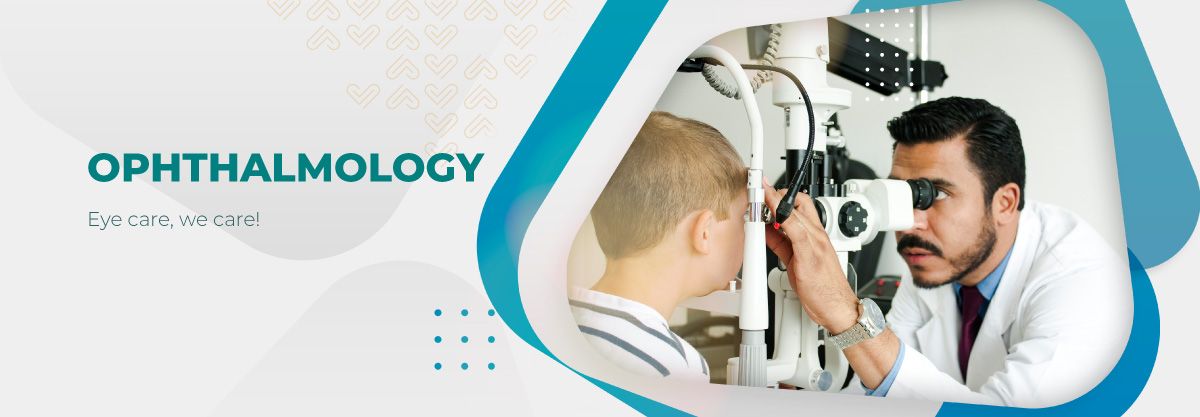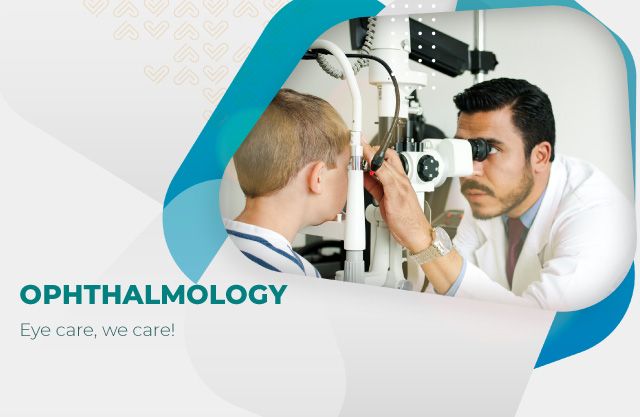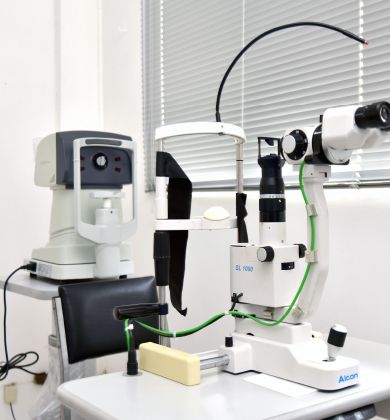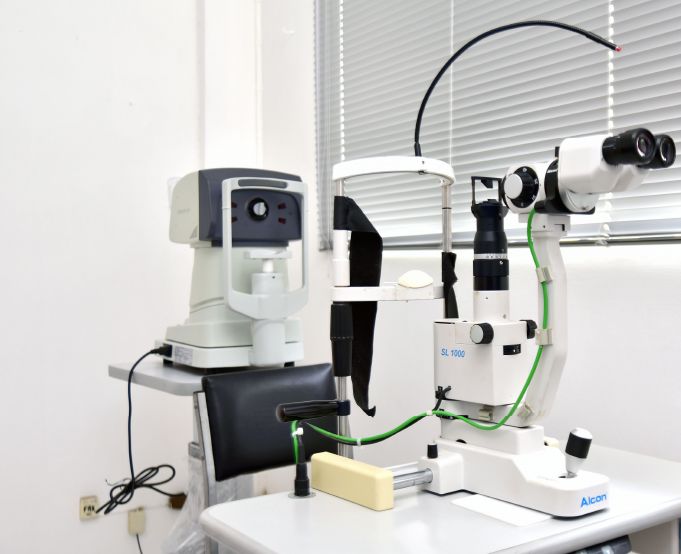Emergency Tel: 211 5157


- Home
- Specialities
- Ophthalmology
Ophthalmology

-
Cataract Surgery
Cataract surgery is a procedure to remove the lens of your eye and, in most cases, replace it with an artificial lens. Normally, the lens of your eye is clear. A cataract causes the lens to become cloudy, which eventually affects your vision.
Cataract surgery is performed by an eye doctor (ophthalmologist) on an outpatient basis, which means you don't have to stay in the hospital after the surgery. Cataract surgery is very common and is generally a safe procedure. Phacoemulsification is the commonest method.
Why it's done
Cataract surgery is performed to treat cataracts. Cataracts can cause blurry vision and increase the glare from lights. If a cataract makes it difficult for you to carry out your normal activities, your doctor may suggest cataract surgery.
When a cataract interferes with the treatment of another eye problem, cataract surgery may be recommended. For example, doctors may recommend cataract surgery if a cataract makes it difficult for your eye doctor to examine the back of your eye to monitor or treat other eye problems, such as age-related macular degeneration or diabetic retinopathy.
In most cases, waiting to have cataract surgery won't harm your eye, so you have time to consider your options. If your vision is still quite good, you may not need cataract surgery for many years, if ever.
When considering cataract surgery, keep these questions in mind:- Can you safely do your job and drive?
- Do you have problems reading or watching television?
- Do vision problems affect your level of independence?
- Do bright lights make it more difficult to see?
Results
Cataract surgery successfully restores vision in the majority of people who have the procedure.
People who've had cataract surgery may develop a secondary cataract. The medical term for this common complication is known as posterior capsule opacification (PCO). This happens when the back of the lens capsule — the part of the lens that wasn't removed during surgery and that now supports the lens implant — becomes cloudy and impairs your vision.
PCO is treated with a painless, five-minute outpatient procedure called yttrium-aluminium-garnet (YAG) laser capsulotomy. In YAG laser capsulotomy, a laser beam is used to make a small opening in the clouded capsule to provide a clear path through which the light can pass.
After the procedure, you usually stay in the doctor's office for about an hour to make sure your eye pressure doesn't rise. Other complications are rare but can include increased eye pressure and retinal detachment. -
LASIK Eye Surgery
LASIK eye surgery is the best known and most commonly performed laser refractive surgery to correct vision problems. Laser-assisted in situ keratomileusis (LASIK) can be an alternative to glasses or contact lenses.
During LASIK surgery, a special type of cutting laser is used to precisely change the shape of the dome-shaped clear tissue at the front of your eye (cornea) to improve vision.
In eyes with normal vision, the cornea bends (refracts) light precisely onto the retina at the back of the eye. But with nearsightedness (myopia), farsightedness (hyperopia) or astigmatism, the light is bent incorrectly, resulting in blurred vision.
Glasses or contact lenses can correct vision, but reshaping the cornea itself also will provide the necessary refraction. -
Cornea Transplant
A cornea transplant is an operation to replace part of the cornea with corneal tissue from a donor. This operation is sometimes called keratoplasty. The cornea is the transparent, dome-shaped surface of the eye. Light enters the eye through the cornea. It plays a large role in the eye's ability to see clearly.
A cornea transplant may:- Restore vision.
- Reduce pain.
- Improve the appearance of a damaged or diseased cornea.
Why it's done
A cornea transplant is most often used to restore vision to a person with a damaged cornea. A cornea transplant also can relieve pain or other symptoms associated with cornea diseases.
A number of conditions can be treated with a cornea transplant, including:- A cornea that bulges outward, called keratoconus.
- Fuchs dystrophy, a genetic condition.
- Thinning or tearing of the cornea.
- Cornea scarring, caused by infection or injury.
- Swelling of the cornea.
- Corneal ulcers not responding to medical treatment.
- Complications caused by previous eye surgery.
Finding a donor cornea
- Corneas used in transplants come from people who have died. Corneas from people who died from unknown causes are not used. Corneas from people who had previous eye surgery, eye disease or certain conditions, such as diseases that are passed from one person to the next, also are not used.
- Unlike people who need organs such as livers and kidneys, people needing cornea transplants don't require tissue matching.
Results
Most people who receive a cornea transplant will have their vision at least partially restored. What you can expect after your cornea transplant depends on your health and the reason for your surgery.
Your risk of complications and cornea rejection continues for years after your cornea transplant. For this reason, see your eye doctor yearly. Cornea rejection can often be managed with medicines.
Vision correction after surgery
At first, your vision might be worse than it was before your surgery. Your eye needs time to adjust to the new cornea. It can take several months for your vision to improve.
It may take several weeks to several months after surgery for the outer layer of your cornea to heal. When it heals, your eye doctor will make adjustments that can improve your vision, such as:- Correcting unevenness in your cornea. The stitches that hold the donor cornea in place on your eye might cause irregularities in your cornea. This uneven surface can cause astigmatism. Astigmatism can make your vision blurry. Your eye doctor might address the astigmatism by releasing some stitches.
- Correcting vision problems. Refractive errors, such as nearsightedness and farsightedness, can be corrected. Your eye doctor may recommend glasses, contact lenses or, in some cases, laser eye surgery.
-
Blepharoplasty
With age, eyelids stretch, and the muscles supporting them weaken. As a result, excess skin and fat can gather above and below your eyelids. This can cause sagging eyebrows, droopy upper lids and bags under the eyes.
Besides aging, severely sagging skin around the eyes can reduce side vision (peripheral vision), especially the upper and outer parts of the visual field. Blepharoplasty can reduce or get rid of these vision problems. The surgery can also make eyes look younger and more alert.
Why it's done
Blepharoplasty might be an option for:- Baggy or droopy upper eyelids
- Excess skin of the upper eyelids that partially blocks peripheral vision
- Excess skin on the lower eyelids
- Bags under the eyes
Blepharoplasty can be done at the same time as another procedure, such as a brow lift, face-lift or skin resurfacing.
Doctor Schedule
Doctors scheduled for the week.
| Monday & Wednesday | 11hr - 13hr | Dr Uteem Farad |
| Monday & Wednesday | 11hr - 13hr | Dr Bisnatsingh |
Doctors and Specialists of Ophtalmology
Contact Us
-

4, Labourdonnais Street,
Port-Louis -

(230) 211 5157
(230) 211 5181
(230) 211 7559 -

(230) 211 4647
Follow Chisty Shifa Clinic
Patients
Publications
Terms & Conditions | Privacy Policy | COPYRIGHT © 2022 Chisty Shifa.
All rights reserved. Powered by Nova Interaction



